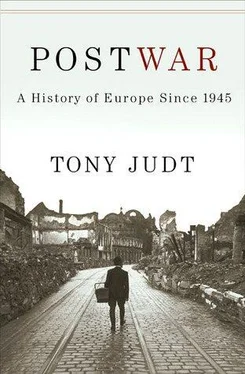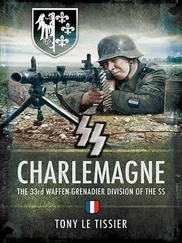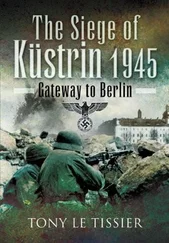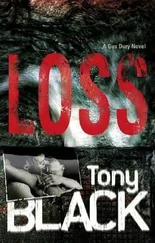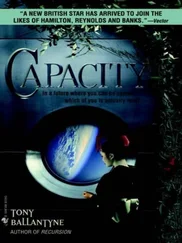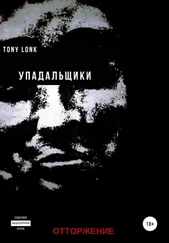In Germany, where the average adult intake had been 2,445 calories per day in 1940-41 and was 2,078 calories per day in 1943, it had fallen to 1,412 calories for the year 1945-46. But this was just an average. In June 1945, in the American Zone of occupation, the official daily ration for ‘normal’ German consumers (excluding favoured categories of worker) stood at just 860 calories. These figures gave rueful significance to the wartime German joke: ‘Better enjoy the war—the peace will be terrible.’ But the situation was not much better in most of Italy and somewhat worse in some districts of Yugoslavia and Greece. [3] By way of comparison—the average daily calorie consumption in France in 1990 was 3,618.
The problem lay partly in destroyed farms, partly in disrupted communications and mostly in the sheer numbers of helpless, unproductive mouths needing to be fed. Where Europe’s farmers could grow food they were reluctant to supply it to the towns. Most European currencies were worthless; and even if there had been the wherewithal to pay peasants for their food in some hard currency, the latter held little attraction for them—there was nothing to buy. So food did appear on the black market, but at prices that only criminals, the rich and the occupiers could pay.
In the meantime, people starved and they fell sick. One third of the population of Piraeus, in Greece, suffered from trachoma in 1945 due to acute vitamin deficiency. During an outbreak of dysentery in Berlin during July 1945—the result of damaged sewage systems and polluted water supplies—there were 66 infant deaths for every 100 live births. Robert Murphy, the US political adviser for Germany, reported in October 1945 that an average of ten people daily were dying at the Lehrter railway station in Berlin from exhaustion, malnutrition and illness. In the British Zone of Berlin, in December 1945, the death rate of children under one year was one in four, while during that same month there were 1,023 new cases of typhoid and 2,193 cases of diphtheria.
For many weeks after the end of the war, in the summer of 1945, there was a serious risk, in Berlin especially, of disease from rotting corpses. In Warsaw, one person in five suffered from tuberculosis. The Czechoslovak authorities in January 1946 reported that half of the 700,000 needy children in the country were infected with the disease. Children all over Europe were suffering from sicknesses of deprivation: tuberculosis and rickets especially, but also pellagra, dysentery and impetigo. Sick children had little recourse: for the 90,000 children of liberated Warsaw there was just one hospital, with fifty beds. Otherwise healthy children died from a shortage of milk (millions of head of European cattle were slaughtered in the battles across southern and eastern Europe in 1944-45) and most were chronically undernourished. Infant mortality in Vienna during the summer of 1945 was nearly four times the rate in 1938. Even in the relatively prosperous streets of western cities children went hungry and food was strictly rationed.
The problem of feeding, housing, clothing and caring for Europe’s battered civilians (and the millions of imprisoned soldiers of the former Axis powers) was complicated and magnified by the unique scale of the refugee crisis. This was something new in the European experience. All wars dislocate the lives of non-combatants: by destroying their land and their homes, by disrupting communications, by enlisting and killing husbands, fathers, sons. But in World War Two it was state policies rather than armed conflict that did the worst damage.
Stalin had continued his pre-war practice of transferring whole peoples across the Soviet empire. Well over a million people were deported east from Soviet-occupied Poland and the western Ukraine and Baltic lands between 1939-41. In the same years the Nazis too expelled 750,000 Polish peasants eastwards from western Poland, offering the vacated land to Volksdeutsche , ethnic Germans from occupied eastern Europe who were invited to ‘come home’ to the newly-expanded Reich. This offer attracted some 120,000 Baltic Germans, a further 136,000 from Soviet-occupied Poland, 200,000 from Romania and others besides—all of whom would in their turn be expelled a few years later. Hitler’s policy of racial transfers and genocide in Germany’s conquered eastern lands must thus be understood in direct relation to the Nazis’ project of returning to the Reich (and settling in the newly-cleared property of their victims) all the far-flung settlements of Germans dating back to medieval times. The Germans removed Slavs, exterminated Jews and imported slave workers from west and east alike.
Between them Stalin and Hitler uprooted, transplanted, expelled, deported and dispersed some 30 million people in the years 1939-43. With the retreat of the Axis armies, the process was reversed. Newly-resettled Germans joined millions of established German communities throughout eastern Europe in headlong flight from the Red Army. Those who made it safely into Germany were joined there by a pullulating throng of other displaced persons. William Byford-Jones, an officer with the British army, described the situation in 1945 thus:
‘Flotsam and jetsam! Women who had lost husbands and children, men who had lost their wives; men and women who had lost their homes and children; families who had lost vast farms and estates, shops, distilleries, factories, flour-mills, mansions. There were also little children who were alone, carrying some small bundle, with a pathetic label attached to them. They had somehow got detached from their mothers, or their mothers had died and been buried by other displaced persons somewhere along the wayside.’
From the east came Balts, Poles, Ukrainians, Cossacks, Hungarians, Romanians and others: some were just fleeing the horrors of war, others escaping West to avoid being caught under Communist rule. A New York Times reporter described a column of 24,000 Cossack soldiers and families moving through southern Austria, ‘no different in any major detail from what an artist might have painted in the Napoleonic wars’.
From the Balkans came not just ethnic Germans but more than 100,000 Croats from the fallen wartime fascist regime of Ante Pavelic, fleeing the wrath of Tito’s partisans. [4] They had good grounds for fear. The British army in Austria would later hand them over to the Yugoslav authorities (under an Allied agreement to return such prisoners to the government against whom they had fought) and at least 40,000 of them were killed.
In Germany and Austria, in addition to the millions of Wehrmacht soldiers held by the Allies and newly released Allied soldiers from German p-o-w camps, there were many non-Germans who had fought against the Allies alongside the Germans or under German command: the Russian, Ukrainian and other soldiers of General Andrei Vlasov’s anti-Soviet army; volunteers for the Waffen SS from Norway, the Netherlands, Belgium and France; and auxiliary German fighters, concentration camp staff and others liberally recruited in Latvia, Ukraine, Croatia and elsewhere. All had good reason to seek refuge from Soviet retribution.
Then there were the newly-released men and women who had been recruited by the Nazis to work in Germany. Brought into German farms and factories from all across the continent, they numbered many millions, spread across Germany proper and its annexed territories, constituting the largest single group of Nazidisplaced persons in 1945. Involuntary economic migration was thus the primary social experience of World War Two for many European civilians, including 280,000 Italians forcibly removed to Germany by their former ally after Italy’s capitulation to the Allies in September 1943.
Читать дальше
